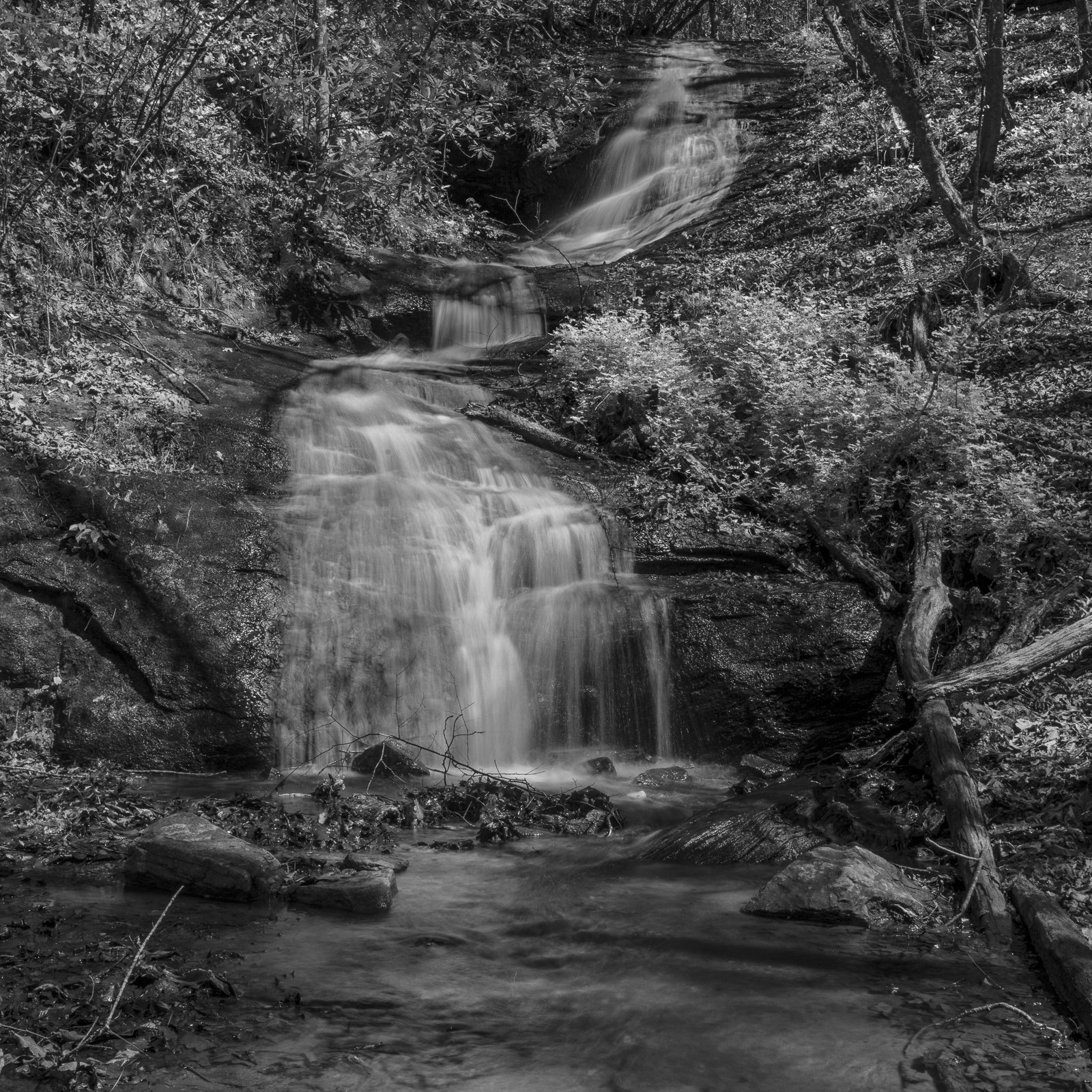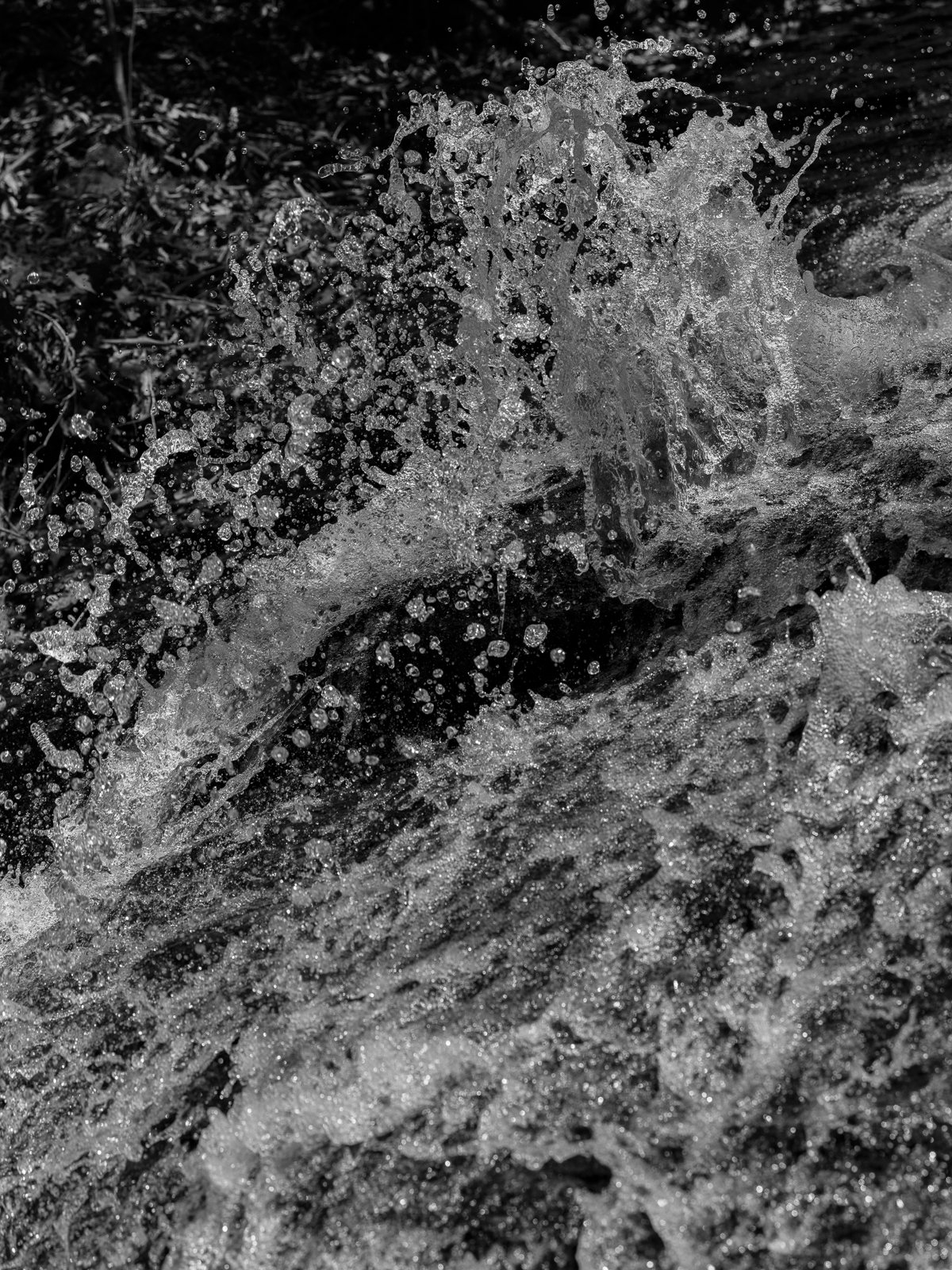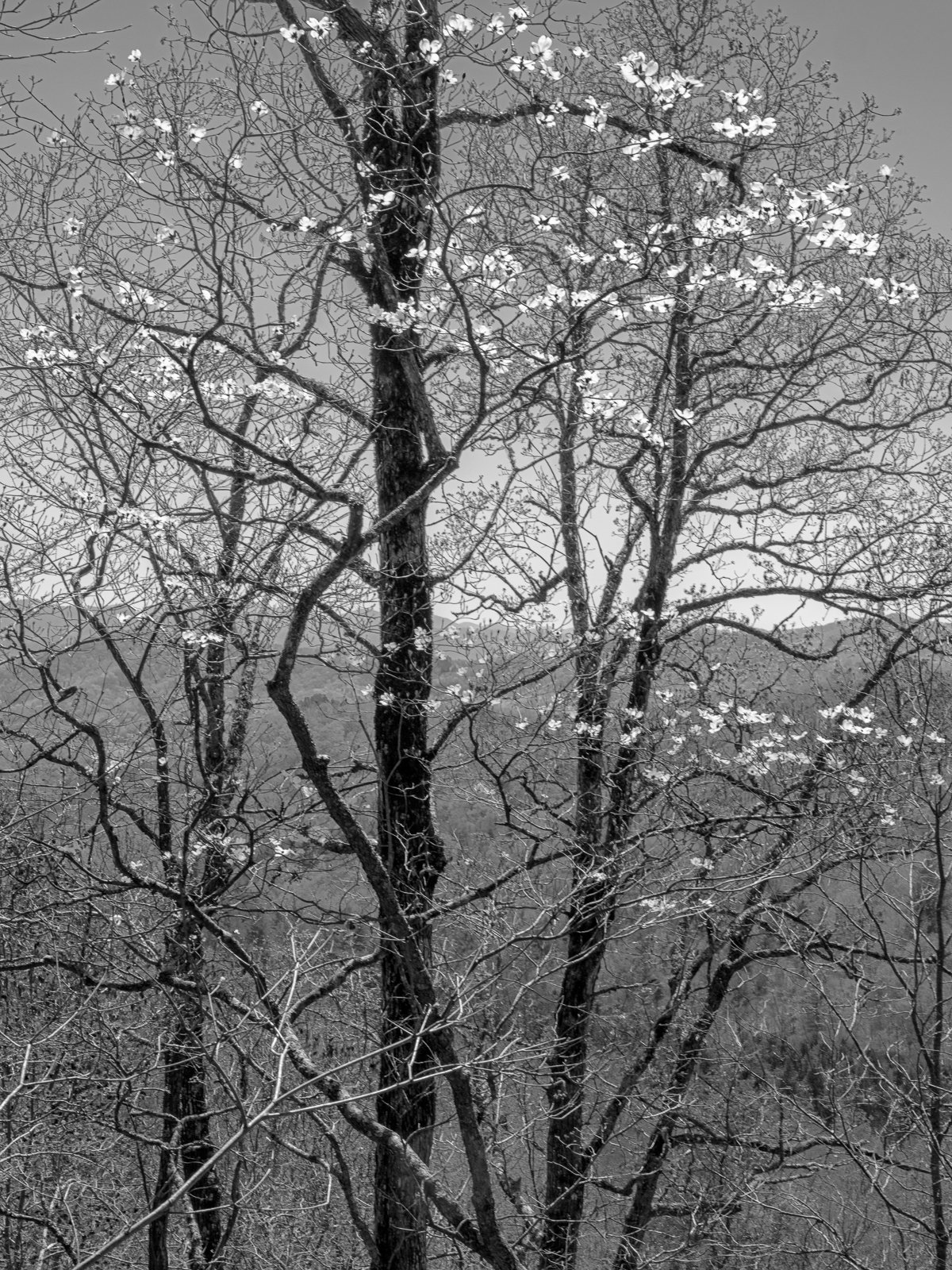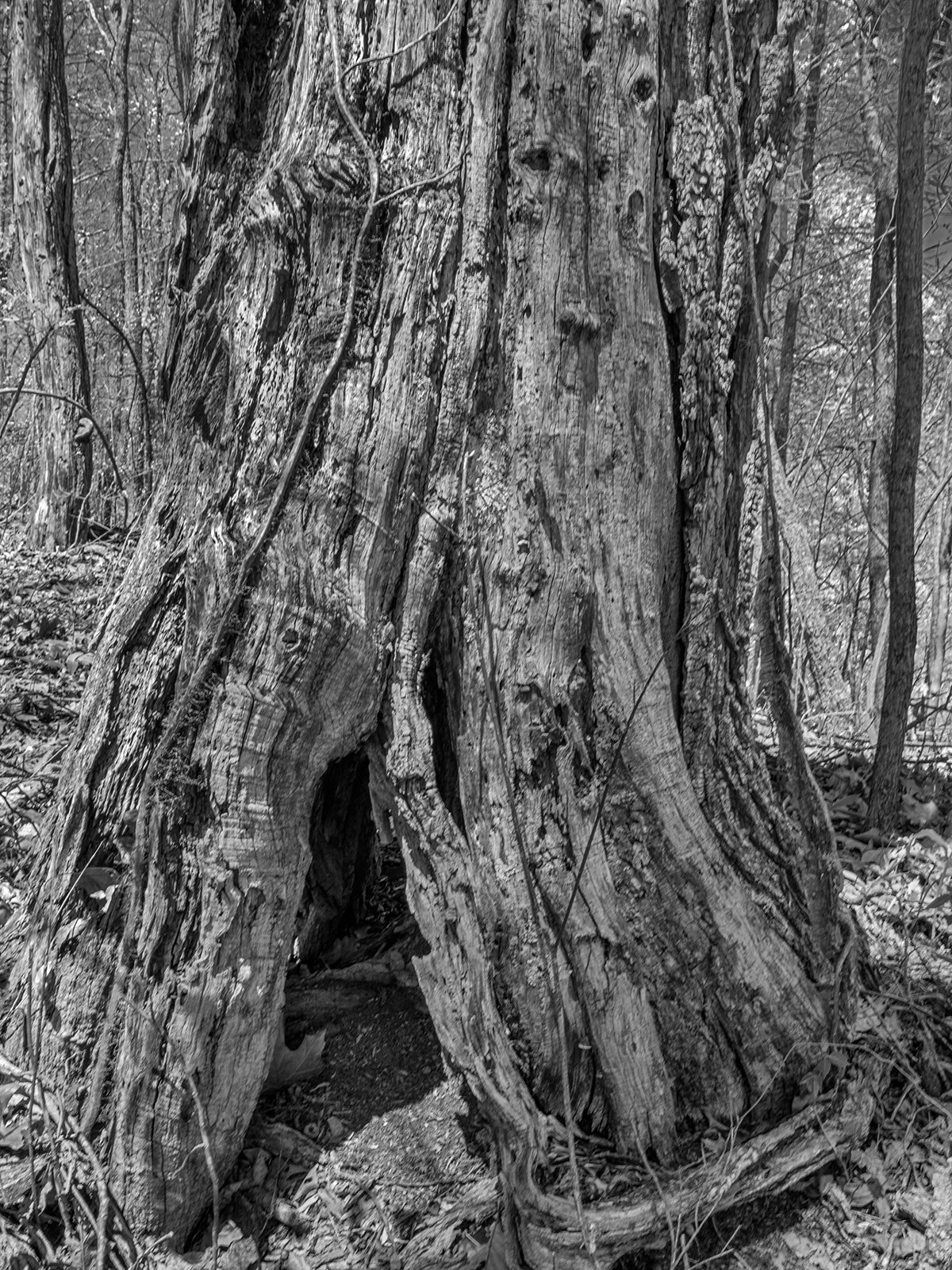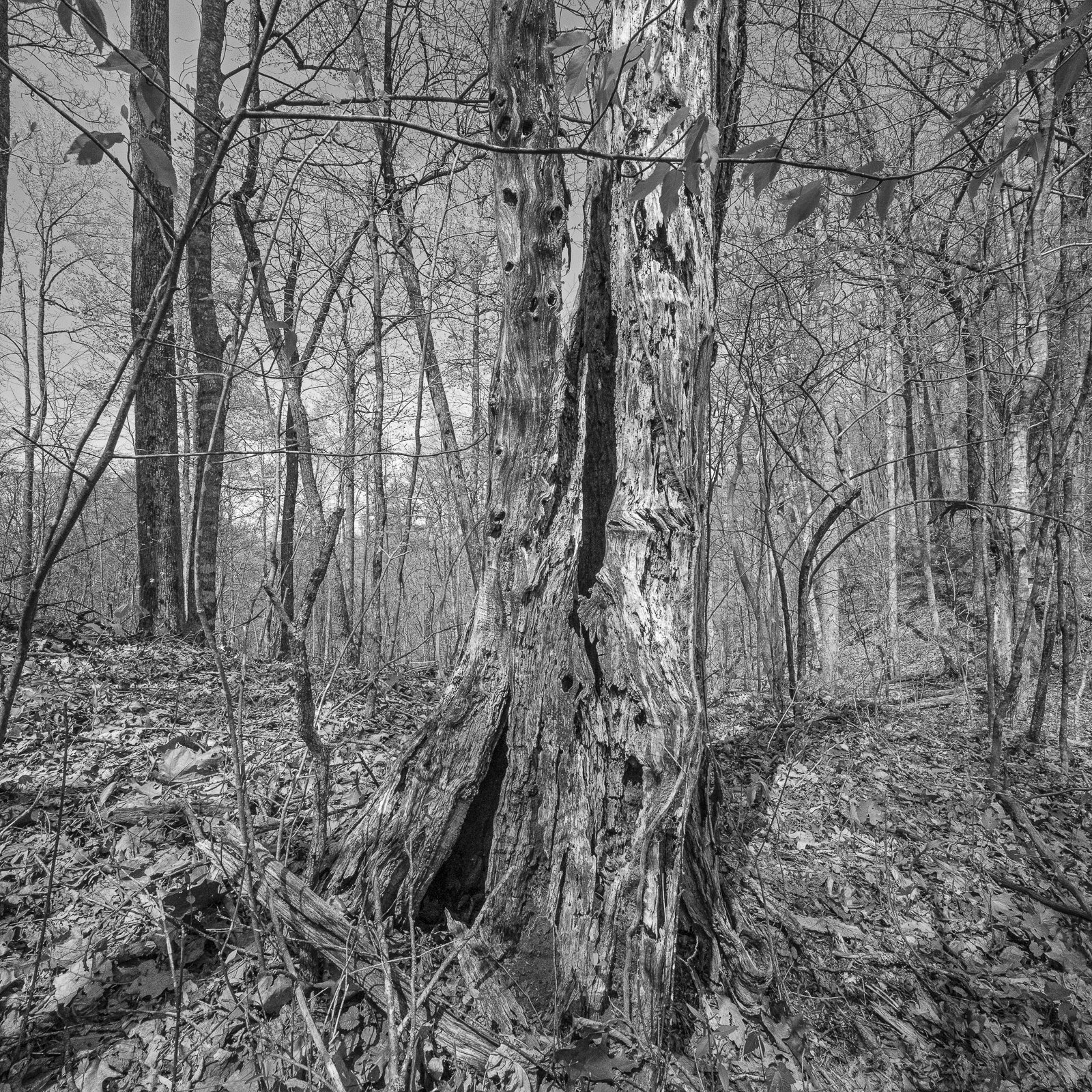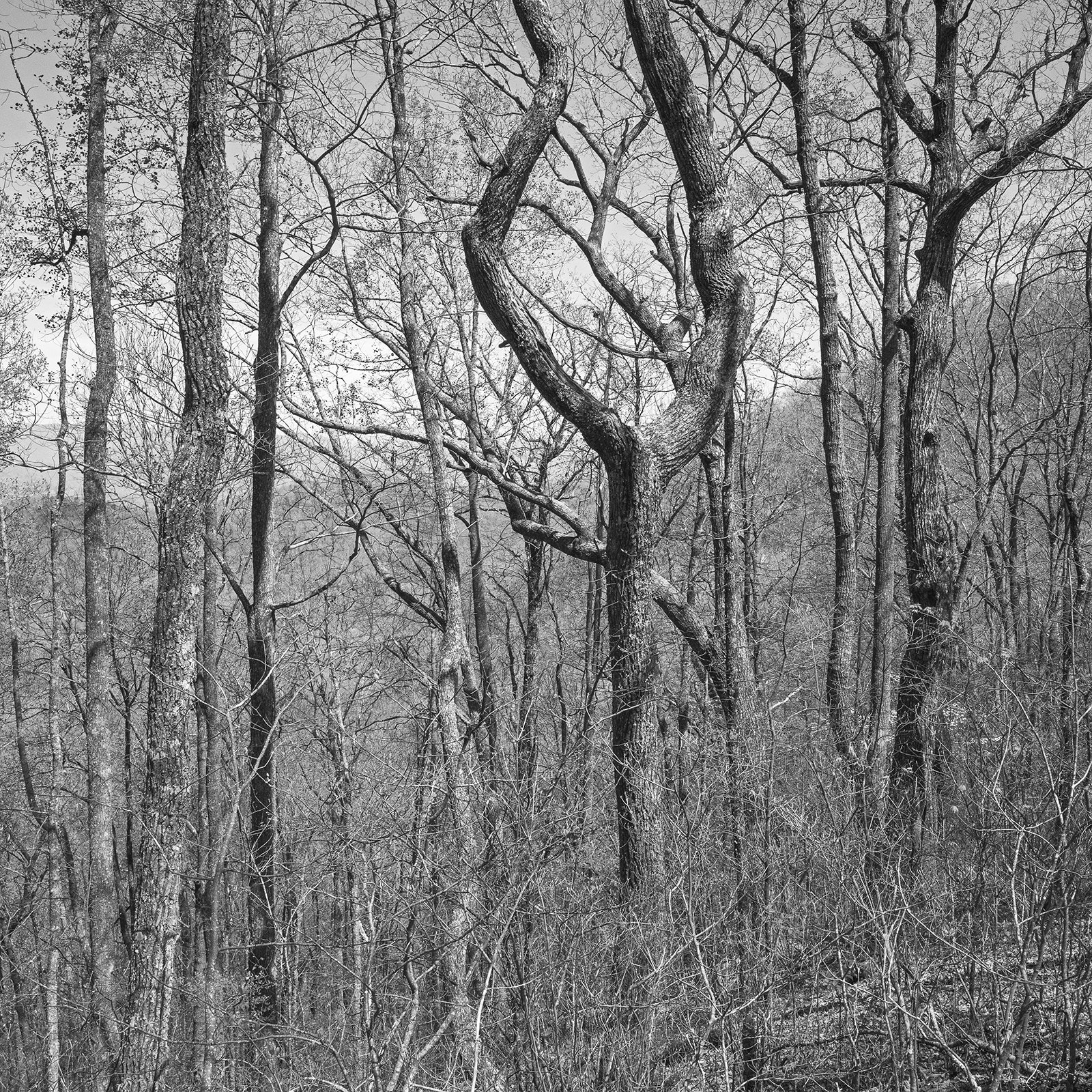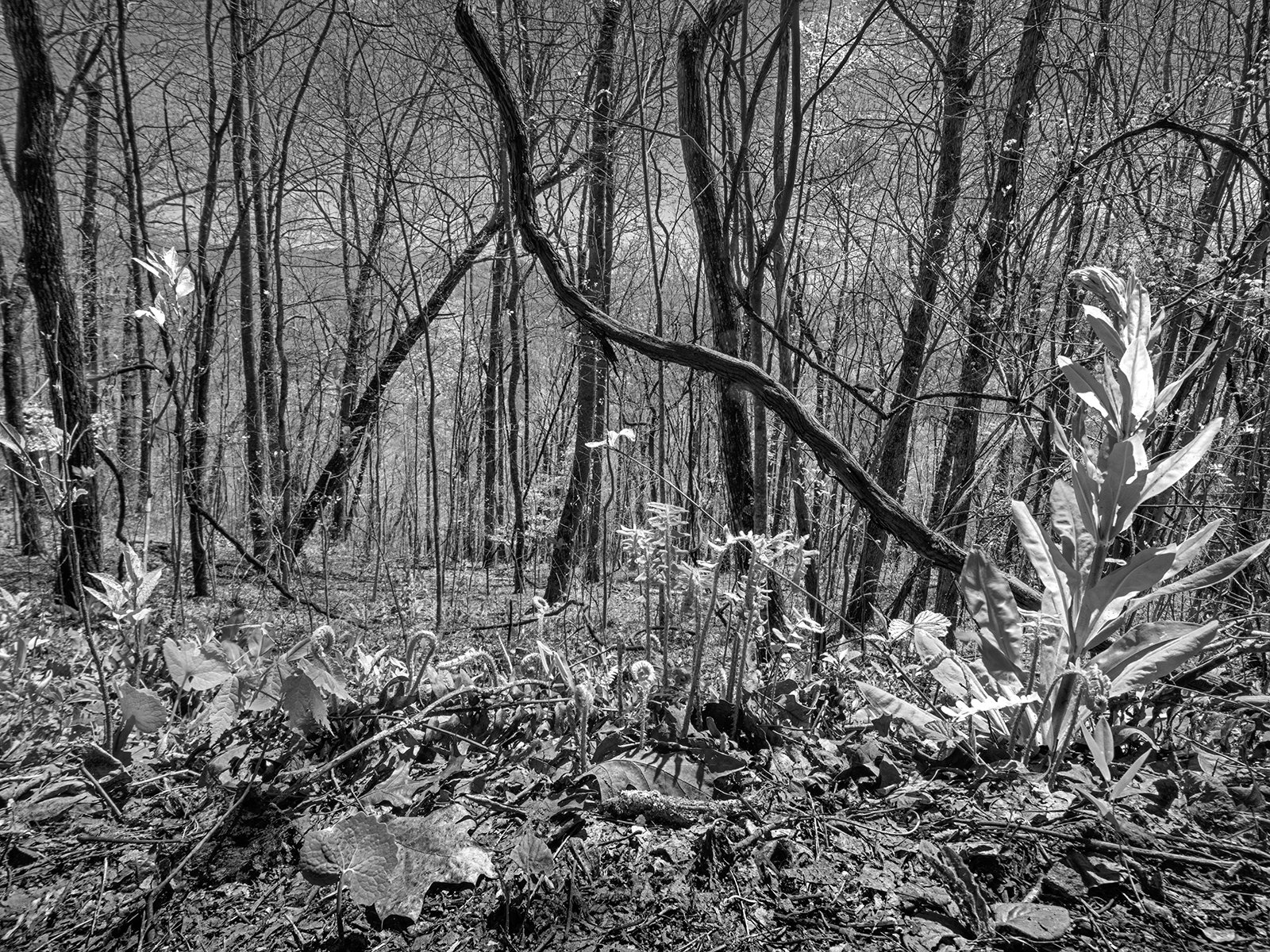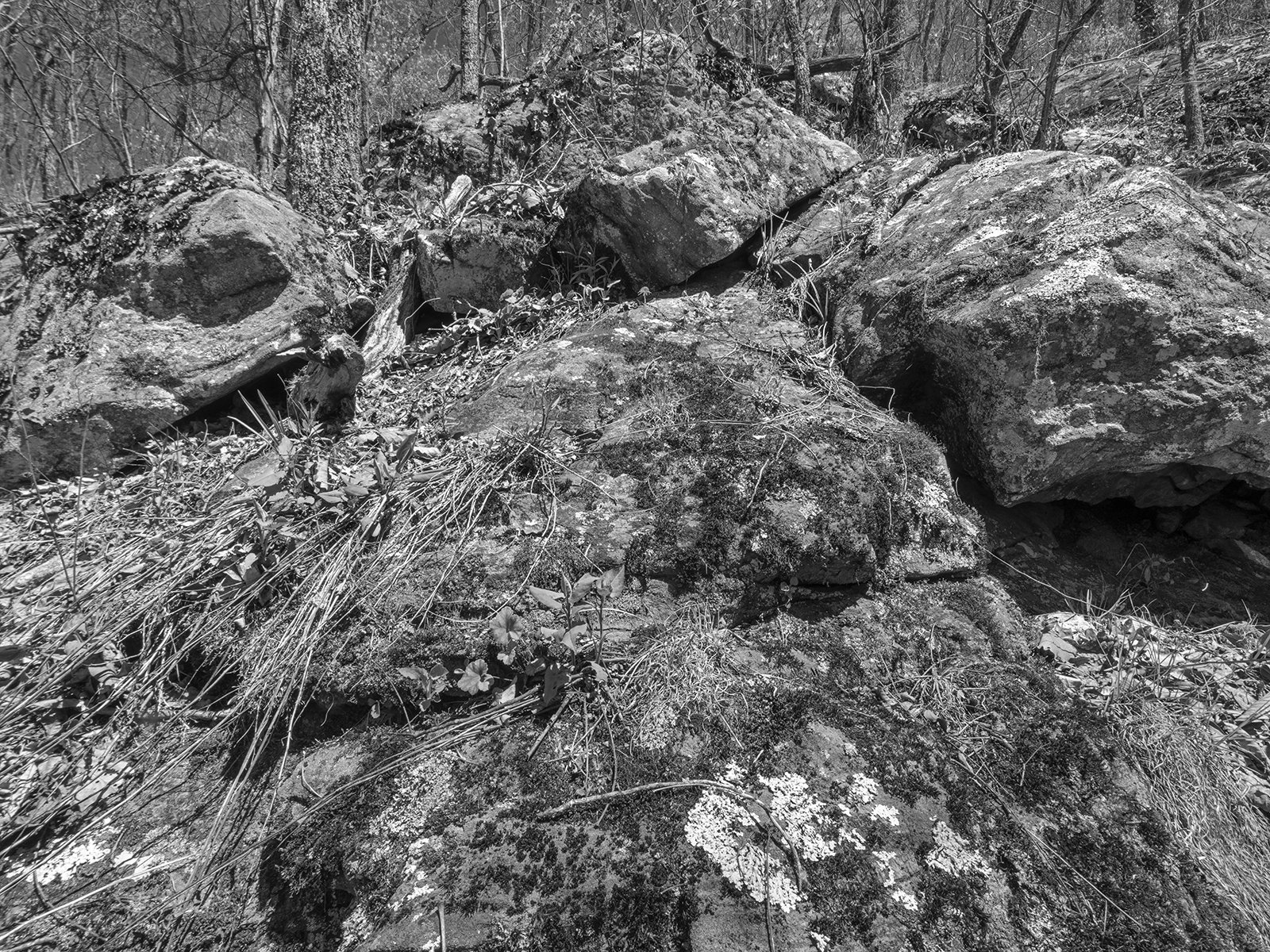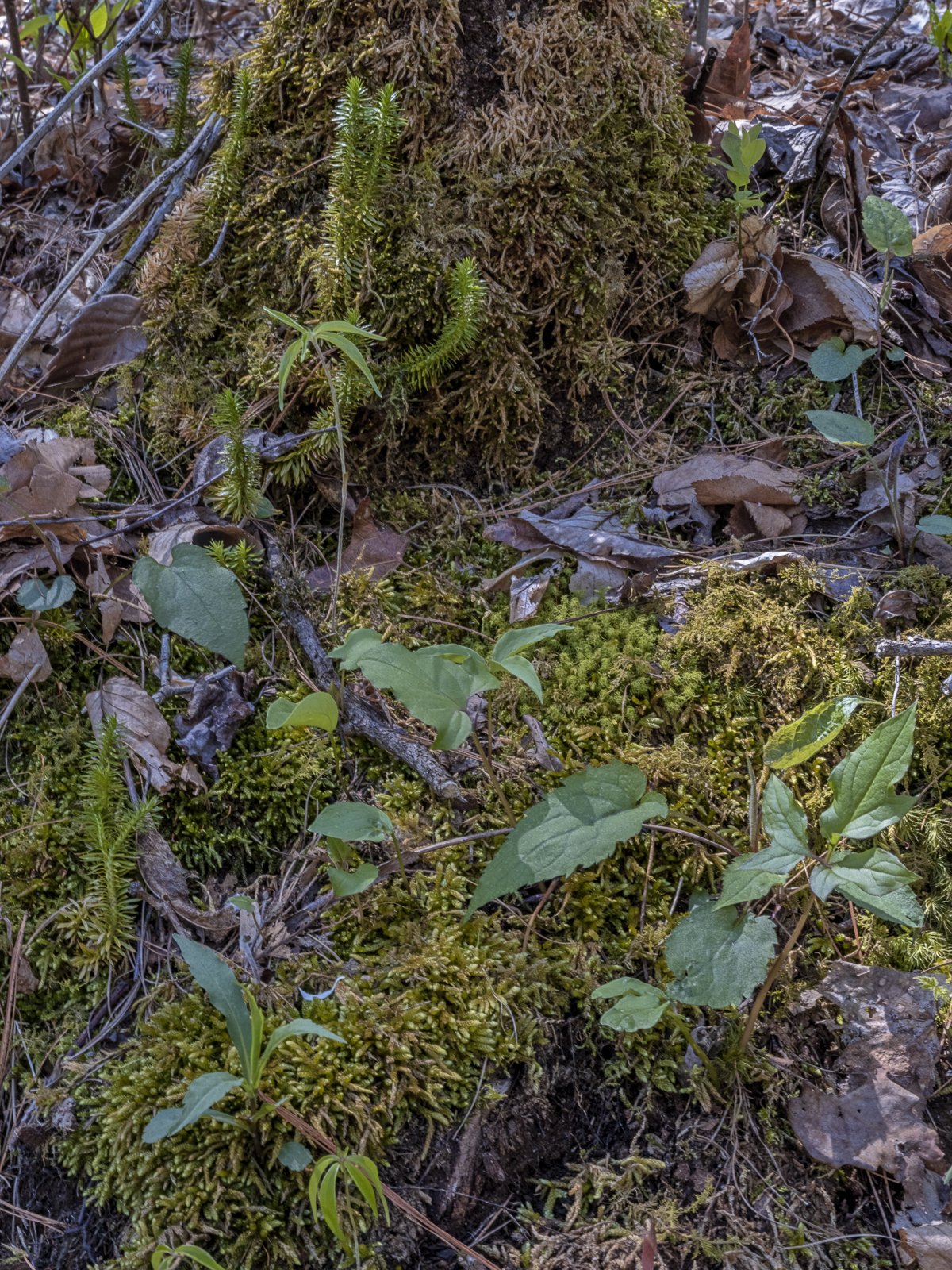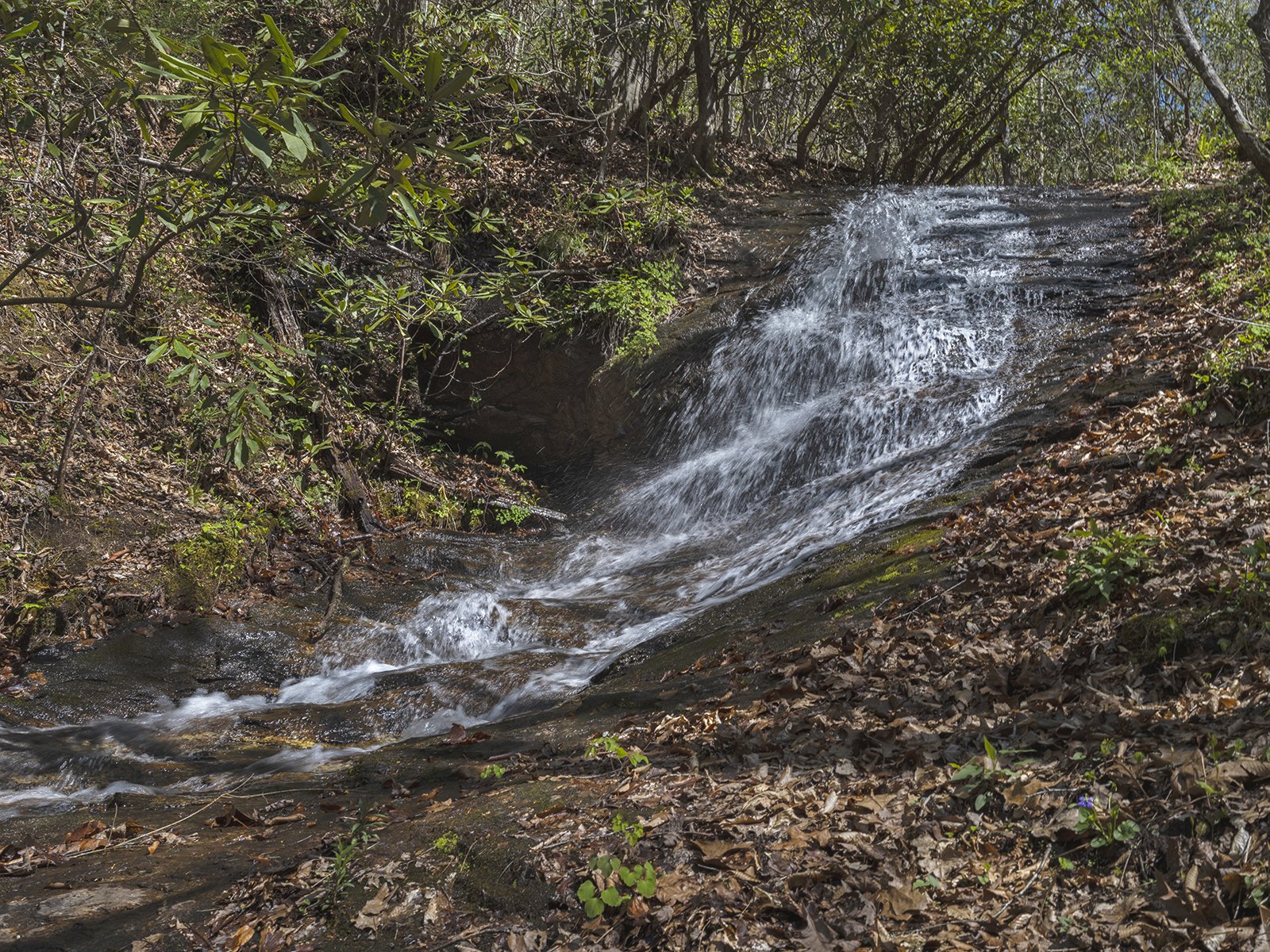Listening to the Land, Bartram Trail from Wallace Branch to William’s Pulpit
Vines Ricocheting Through the Landscape
One day last month, I hiked the Bartram Trail from Wallace Branch to William’s Pulpit to listen and connect with the land as part of a project organized by the Kinship Collective to photograph the Bartram Trail in North Carolina and Georgia. I am always very sensitive to the energy of the land, and when I saw all these vines dancing through the woods I visualized them rebounding and could almost hear the sounds of them cracking . Everything in nature and in life is interconnected and here I could feel and see how these relationships created the space I was inhabiting. I have been reading The Order of Time by Carlo Rovelli, a loop physicist. We can only experience time and space from being in it, and the concept of space and time existing outside of our experience makes no sense since time as we think of it does not exist on a quantum level. Everything at this minuscule scale is formless and in a constant state of vibration. Our perceptions of time and space are colored by our experiences of the subset of what we are interacting with. To experience the existence of time on a human level requires a process of forgetting, because there are so many interrelations that we are incapable of holding all of them in our consciousness at one time. Every now and again, we get a glimpse of how everything comes together, but it is still always a partial awareness.
Entangled Roots
Sometimes when layers of earth are eroded, we can see the hummus made from dead leaves and organic matter in the top soil, roots and even threads of mycelium with our naked eye . There is so much rich life beneath the surface of things, especially on a microscopic level. The roots of this tree were so entangled that even though so many were exposed, the tree was still standing erect. It made me reflect how wise trees and nature are to know when it is important to turn inwards to hold everything together and stay strong in the face of external forces. These roots speak of perseverance and endurance, and the vegetation that has sprung up around them was wise too in recognizing symbiotic opportunities for obtaining nutrients and perhaps even protection.
There is a beautiful waterfall along the trail that was flowing quite rapidly due to all the rain the preceding day. I made two images, one with a long exposure and another close up with a fast exposure. Water always makes me think of time, since I was raised by a philosopher who loved Heraclitus’ quote about how a man can never step into the same river twice, because it’s not the same river and he’s not the same man. For most of my life, I thought of time as an evenly dispersed continuum between the past, present, and future, since that is what we are taught to believe. However, we don’t always experience time that way. Sometimes days seem to last forever, especially when we are bored, and other times it passes by too quickly. Growing up I always felt that way about my summer vacations––they seemed to end before they’d even begun. Loop theorists believe that the temporality is far more complex than a linear succession of instants. On a quantum level, time is the happening of the world and it is granular and without direction. Rather it is a reciprocal interaction of quanta that occur in jumps and starts. It is constantly fluctuating in a way that probabilities still govern. When I look at the world this way, jumping water that creates chaotic spray when it hits rocks before becoming dispersed in multiple directions seems to be a more accurate representation of what is happening . However, some prefer images of water that has been smoothed over, because it speaks to the part of us that encourages our minds to become ignorant of details, so we can experience our own idea of ordered temporality and make sense of the flow of events in our lives.
Spring is announced by the presence of dogwoods, one of the first trees to bloom. They are viewed as symbols of rebirth and hope by many cultures, and some say the circular grouping of flowers evokes the crown of thorns worn by Jesus. I am drawn to their delicate blossoms, which still somehow survive, even though they bloom before cooler weather is guaranteed to be over. This particular tree on the ridge was particularly beautiful and evoked courage and innocence to me. Yet to experience a full sense of place, one must look to the shadows too. These rhododendron shadows seemed to be dancing on the rocks and I felt they could even be interpreted as a sign language from plants, if I only understood it. In order to make sense of the world, we often seek patterns. It is the form of what we depict that gives meaning to our images. The way we frame scenes often creates the appearance of an internal system within the photograph that would not exist if we were to frame the scene another way. Sometimes the image indicates it is closed and to focus within the frame, and sometimes the image tells us to imagine what lies beyond its borders. Compositions and form are related to our mental states, which are just as significant as is what we encounter.
One thing I have become increasingly drawn to is dying trees and old decaying stumps. Often the trunks are hollowed out and provide homes for other creatures. There are slits to the core that function like windows to the trees’ souls. The marks on the trunks reflect the lived experience of the tree and contribute to their beauty and personalities. The way branches split from a trunk to reach for light and energy, always intrigues me. In the last image above, it almost looked like it had goal post arms and I felt that it was celebrating being alive and able to stand.
When I saw this Carolina Vetch, the tall plant in the image on the left, I felt as if I had stumbled on an oasis, its green color brightening an otherwise drab landscape before spring and summer arrive bringing an explosion of growth. There were also many fiddlehead ferns. The vegetation seemed to grow neatly in a line, blocking my entry. Yet, the tree trunks reaching back from the front plane of the photograph invited me into the scene. To capture this tension, I was crawled on the ground near the plants trying to get a worm’s eye view. I always respond to the push-pull of the landscape and whether access is easy or fraught. There are boulders along the ridge too. The way the space is vertically constructed with no room for air and almost falling out of the scene calls to mind modern still-life photographers. I should also add that Robin Wall Kimmerer believes rocks are a live and sensate as well, and when we think of subatomic particles vibrating in all existing mass, no matter how seemingly sold, this does feel true.
These last two images are in color, because sometimes color adds to the image in my opinion. After reading Robert MacFarland’s book Understory, I am continually studying the ground. On the Bartram Trail, I saw several tree trunks with many small plants and mosses growing right on their bark and all around their base. They were hugely complex ecosystems and fascinating. The image on the right is the same waterfall, only this time I let the water assert its perpetually changing form and continuous/discontinuous state. This image feels much closer to how I experienced the landscape and thus more natural. Working on this project has been extremely rewarding, since I continuously strive to determine the health of the land and how it is being affected by weather systems and the aspect of man, and of course my own mental and physical state which is a weather system of its own. Above all, I am always grateful to Mother Nature for the lessons she imparts.



